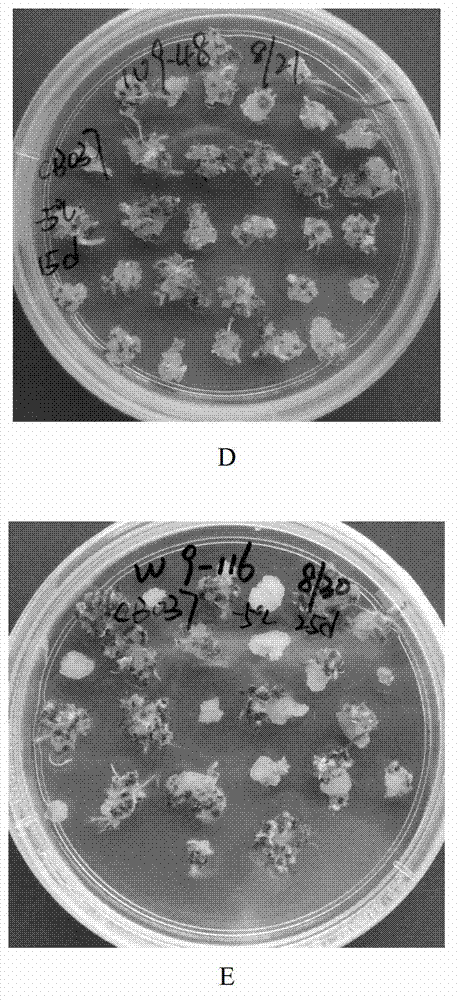Wheat embryo freezing and storing method
A technology of wheat and immature embryos, applied in botany equipment and methods, plant preservation, application, etc., can solve the problems of short time, loss of regeneration potential, limited amount of experimental materials, etc., to reduce the rate of seed germination and prolong the supply time Effect
- Summary
- Abstract
- Description
- Claims
- Application Information
AI Technical Summary
Problems solved by technology
Method used
Image
Examples
Embodiment 1
[0018] Example 1. Low-temperature storage test of wheat CB037 immature embryos at -10°C
[0019] In this example, the wheat variety CB037 was taken as the test object, and the effect of tissue culture after the immature embryos of wheat CB037 were stored at -10°C for different periods of time was studied and analyzed. details as follows:
[0020] 1. Acquisition of wheat ears
[0021] The wheat variety CB037 was planted in the experimental farm of the Crop Science Research Institute of the Chinese Academy of Agricultural Sciences (from April to May, the temperature during the wheat growth period was 15-30°C). The immature embryos are heart-shaped embryos with a size of 1.3-1.5 mm.
[0022] 2. Treatment of young ears of wheat at -10°C for different periods of time
[0023] The young ears of wheat CB037 obtained in step 1 were tightly wrapped with tin foil, placed in a plastic bag, and stored in a -10°C low-temperature refrigerator for different periods of time (0, 1, 5, 7, 9,...
Embodiment 2
[0038] Example 2. Low temperature storage test of wheat CB037 immature embryos at -5°C
[0039] In this example, the wheat variety CB037 was used as the test object, and the effect of tissue culture after the immature embryos of wheat CB037 were stored at -5°C for different periods of time was studied and analyzed. details as follows:
[0040] 1. Acquisition of wheat ears
[0041] The wheat variety CB037 was planted in the experimental farm of the Crop Science Research Institute of the Chinese Academy of Agricultural Sciences (from April to May, the temperature during the wheat growth period was 15-30°C). The immature embryos are heart-shaped embryos with a size of 1.3-1.5 mm.
[0042] 2. Treatment of young ears of wheat at -5°C for different periods of time
[0043] Wheat CB037 young ears obtained in step 1 were tightly wrapped with tin foil, placed in a plastic bag, and stored in a -5°C low-temperature refrigerator for different periods of time (0, 5, 10, 15, 20, 25, and ...
PUM
 Login to View More
Login to View More Abstract
Description
Claims
Application Information
 Login to View More
Login to View More - R&D
- Intellectual Property
- Life Sciences
- Materials
- Tech Scout
- Unparalleled Data Quality
- Higher Quality Content
- 60% Fewer Hallucinations
Browse by: Latest US Patents, China's latest patents, Technical Efficacy Thesaurus, Application Domain, Technology Topic, Popular Technical Reports.
© 2025 PatSnap. All rights reserved.Legal|Privacy policy|Modern Slavery Act Transparency Statement|Sitemap|About US| Contact US: help@patsnap.com



